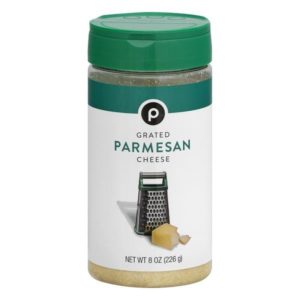 Dale J. Giali is a Partner in the Los Angeles, CA office of Mayer Brown LLP.
Dale J. Giali is a Partner in the Los Angeles, CA office of Mayer Brown LLP.
The U.S. Food and Drug Administration permits grated parmesan cheese to include anti-caking and anti-contamination ingredients. 21 CFR § 133.146(c). FDA also permits – indeed, requires – the cheese with these additional ingredients be called grated parmesan cheese. 21 CFR § 133.146(d)(3)(i). None of this is disputed.
When food companies, following these regulations precisely, labeled their parmesan cheese product “100% Grated Parmesan Cheese” they were sued for false advertising under state consumer protection law. The 100% in the name, the complaint alleged, deceived consumers into thinking the product consisted solely of cheese without anti-caking and anti-contamination ingredients. One class action quickly turned into many, as consumer lawyers across the country (at last count, more than 60 different consumer lawyers) wanted a slice of the action. The class actions—under the false advertising laws of ten states and covering nationwide sales going back more than four years—were transferred to the Northern District of Illinois and consolidated for pretrial proceedings under the Multidistrict Litigation law. See In Re: 100% Grated Parmesan Cheese Marketing and Sales Practices Litigation, No. 1:16cv5802 (N.D. Ill.).
The district court dismissed the false advertising claim on a Fed. R. Civ. P. 12(b)(6) motion under an Iqbal/Twombly plausibility analysis. As it should, the district court assessed the challenged name in context and applying common sense. It concluded that the name 100% Grated Parmesan Cheese was (at worst for defendants) ambiguous. The 100% could mean multiple things, e.g., it’s 100% grated or the cheese is 100% parmesan or the product is standard-of-identity-compliant grated parmesan cheese as FDA defines it. In that situation, where the challenged label statement is subject to multiple interpretations, the district court ruled that the reasonable consumer should be held to the additional information on the label if that additional information would dispel the confusion. Here, that additional information included the legally required ingredient list that specifically disclosed the inclusion of the anti-caking and anti-contamination ingredients. Nothing about plaintiffs’ linguistics expert reports or consumer survey, both of which created for the express purpose of avoiding dismissal, changed this straightforward record. Accordingly, and as a matter of law, the district court ruled that reasonable consumers would not be deceived by the product name, and dismissed the claim with prejudice.
Last week, the Seventh Circuit reversed and reinstated the false advertising claim. Bell v. Publix Super Markets, Inc., — F.3d —-, 2020 WL 7137786 (7th Cir. Dec. 7, 2020). Rejecting what it called the district court’s “ambiguity rule,” and along with it a consumer’s personal responsibility and obligation to apply a little common sense while shopping—while ever-increasing the court’s role in protecting consumers from themselves and against clever advertisers and their tricky lawyers—the Seventh Circuit said that
[c]onsumer-protection laws do not impose on average consumers . . . with a child or two in tow . . . an obligation to question the labels they see and to parse them as lawyers might for ambiguities, especially in the seconds usually spent picking a low-cost product.
 They don’t? Why not and why shouldn’t they? Why should a consumer get to make rushed shopping decisions while preoccupied and then sue based on some after-the-fact perceived ambiguity on the label that the same label clearly dispels? Why isn’t it enough that legally mandated information right on the label provides the consumer with all the information needed? If a consumer really wanted a product that was solely parmesan cheese, without any incidental ingredients whatsoever (including those designed to keep the product from caking and contamination), should that consumer rely on the necessarily limited information provided solely by the product name and after only a few-second review or, instead, spend the time to consult the legally required and detailed objective information on the label?
They don’t? Why not and why shouldn’t they? Why should a consumer get to make rushed shopping decisions while preoccupied and then sue based on some after-the-fact perceived ambiguity on the label that the same label clearly dispels? Why isn’t it enough that legally mandated information right on the label provides the consumer with all the information needed? If a consumer really wanted a product that was solely parmesan cheese, without any incidental ingredients whatsoever (including those designed to keep the product from caking and contamination), should that consumer rely on the necessarily limited information provided solely by the product name and after only a few-second review or, instead, spend the time to consult the legally required and detailed objective information on the label?
The court doesn’t address these based-in-reality questions, intent instead on giving consumers a free-pass on responsibility—and a key to the consumer class action courthouse door—when they “make quick decisions that do not involve careful consideration of all information available to them.” All of that, in turn, the Seventh Circuit tells us, leads to the legal principle that “[h]ow reasonable consumers actually understand” an ambiguous product name “is a question of fact that cannot be resolved on the pleadings.”
Bah humbug.
Having been on the front lines of defending these types of claims for more than a decade, including taking scores of depositions of plaintiffs, the decision—which needlessly and unfortunately strengthens the consumer class action bar’s already-plenty-strong hand in pleading attack proceedings—strikes me as equal parts paternalistic and ivory tower. It fails entirely to grapple with what is actually going on in our trial courts, i.e., a perfect storm of profit-motivated consumer lawyers generating and then driving claims under state consumer protection laws governed by the largely undefinable “reasonable consumer” standard, strategically exploiting the class action vehicle and its in terrorem settlement impact, and taking full advantage of the liberal rules allowing those same lawyers to solicit individuals to serve as stand-ins for the role of plaintiffs (who are only then informed of the deception they allegedly suffered and will be suing over).
Though failing to grapple with any of this, the Seventh Circuit does recognize an essential component of the flood of false advertising cases against consumer packaged-goods manufacturers, when it acknowledges (in the concurring opinion) that consumer “lawyers . . . can find ambiguity in just about anything.” In other words, “just about” any packaged good can be targeted in a false advertising complaint based on mere ambiguity and, in the Seventh Circuit, that false advertising claim may not be defeated at the pleading stage even where the label provides clarifying language.
The decision is proud to announce that, as to that issue, the Seventh Circuit is now in line with the First, Second, and Ninth Circuits. But that’s not accurate. I am not aware of any decisions holding that false advertising claims based on a mere ambiguity—especially one that is cured by the label itself—are immune from a plausibility pleading attack. See, e.g., Ebner v. Fresh Inc., 838 F.3d 958, 966 (9th Cir. 2016) (“in light of . . . deceptive”—not merely ambiguous—“packaging, we rejected the use of the ingredient list as a ‘shield for liability for the deception[,]’ explaining that a reasonable consumer is not ‘expected to look beyond misleading representations on the front of the box to discover the truth from the ingredient list’”) (emphasis added); Mantikas v. Kellogg Company, 910 F.3d 633, 637 (2d Cir. 2018) (same).
Be careful what you ask for Seventh Circuit. You may just become the new food court for the country. Having served in that role for more than ten years, courts in the Ninth Circuit appear more than ready to give up the moniker:
Every reasonable shopper knows that the devil is in the details. Moreover, any potential ambiguity could be resolved by the back panel of the products, which listed all ingredients in order of predominance, as required by the FDA. As our court of appeals stated in this context, ‘reasonable consumers expect that the ingredient list contains more detailed information about the product that confirms other representations on the packaging.’
Workman v. Plum PBC, 141 F. Supp. 3d 1032, 1035 (N.D. Cal. 2015) (quoting Williams v. Gerber).
